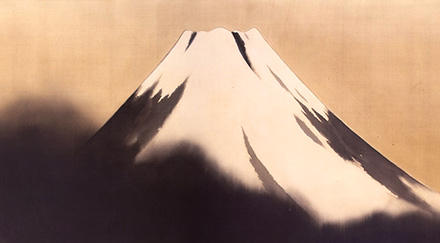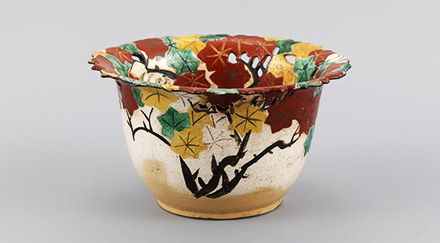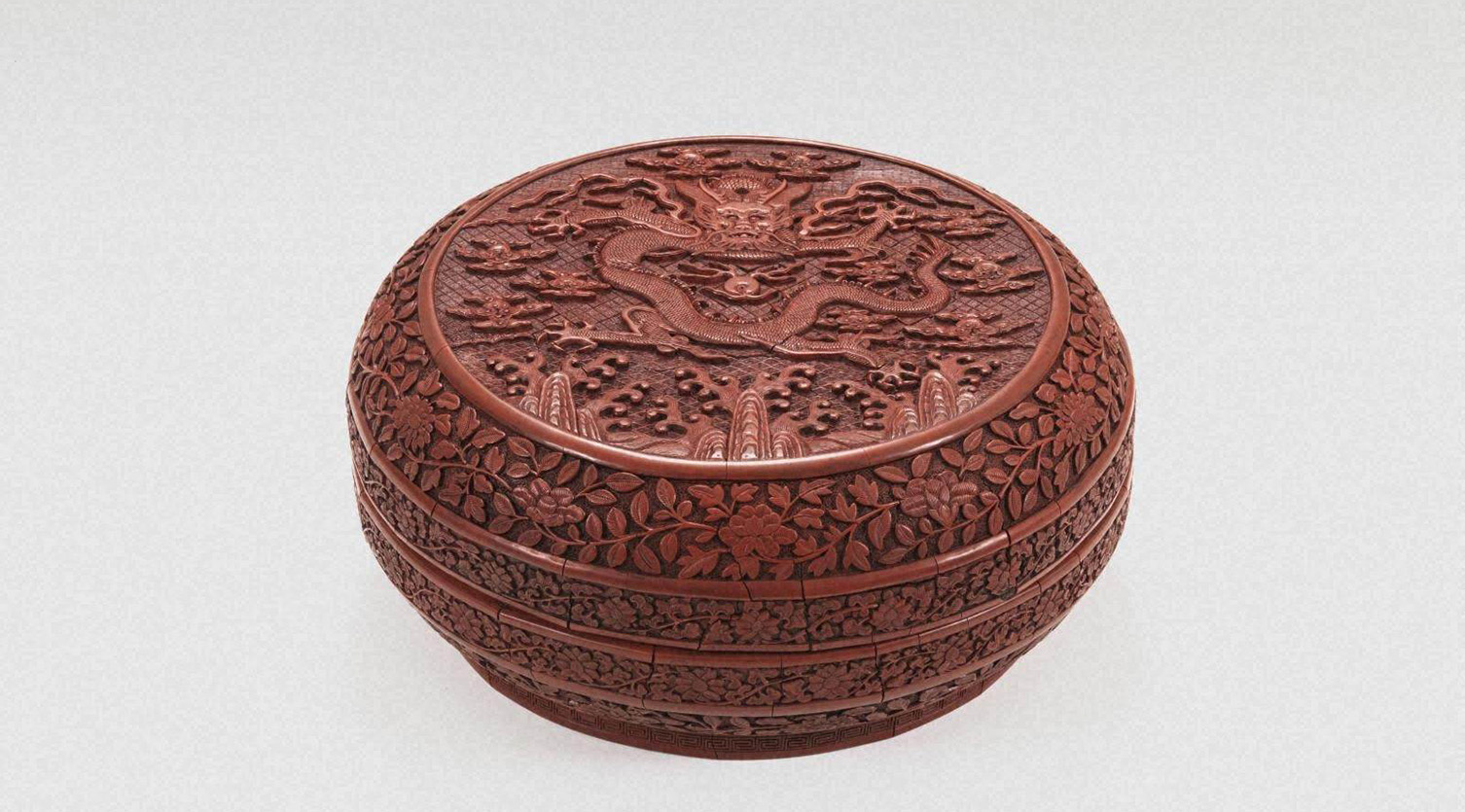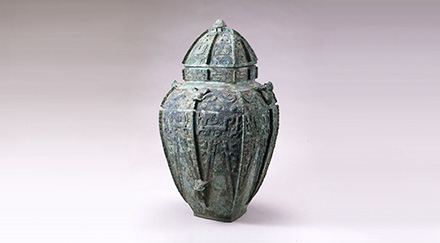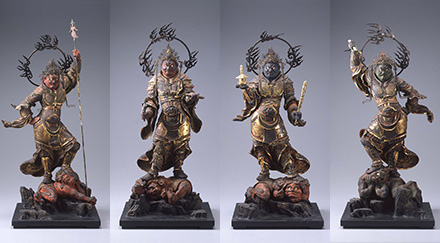Utamaro and Hokusai ― Creators of an Era ―
June 11 (Sunday),2023~December 10 (Sunday),2023
The Okada Museum of Art marks its 10th anniversary in October this year. The second part of its exhibition commemorating this milestone features Kitagawa Utamaro and Katsushika Hokusai, ukiyo-e masters who created groundbreaking work in new styles and struck a chord with common people. These two figures made their debuts at almost the same time. Utamaro was the first to find popularity with his bijin-ga(images of beautiful women), while Hokusai worked in various fields, not only bijin-ga, but also genre-painting, landscapes, bird-and-flower painting, and musha-e (depictions of warriors) – leaving a huge quantity of work behind him from his 90 year life.
This exhibition is centered around unique hand-painted pieces, three by Utamaro and ten by Hokusai, that belong to our collection, alongside Hokusai’s signature block printing work Thirty-six Views of Mt. Fuji, and a masterpiece of erotic painting, Nami Chidori (“Plovers Above the Waves”), all of which will be shown together. There are thought to be only around 40 existing hand-painted pieces by Utamaro, so this exhibition offers a rare opportunity to see three of them, including the wonderful Snow in Fukagawa, which was rediscovered in 2012. The over 40 pieces exhibited will not exclusively consist of works by Utamaro and Hokusai, but also feature works by their contemporaries, and those before and after their period. We hope you enjoy it.
Exhibition of Snow in Fukugawa will be limited to the period of September 8th to December 10th. (Outside of that period, a high-resolution replica will be on display.)
Feature Exhibition – Wucai: Jingdezhen and Other Porcelain
Wucai, or five-colored porcelain, was the final style to emerge in Chinese ceramics history; painting with red, green, and yellow on white ceramics and glazing it at low temperatures became a major feature in the pottery of the Ming and Qing dynasties. This selection will trace the path of wucai porcelain from the 13th to the 19th centuries, from Jin dynasty sō-akae (Song red ceramic) to late Qing dynasty doucai (cyan tone ceramic), including work from the Wanli era of the Ming dynasty, which was the pinnacle of wucai porcelain art. This exhibition will display around 20 pieces, two of which have never before been shown in public, including some pieces that were admired by Japanese tea ceremony masters, such as shonzui (the highest quality sometsuke coloring) and the red glaze of Swatow Ware. Dive into the world of splendid wucai, with various colorful patterns that symbolize Chinese culture, such as dragons representing emperors, and bats that carry the meaning of happiness.
<To say thank you for 10 years, we have a special pair of invitations for your birthday! >
Free admission for you and a companion on your birthday
*Available only during the 10th Anniversary Exhibition, Parts 1 & 2.
* Please present your ID at reception.
<See, eat, and shop! Get an original eco bag!>
Collect stamps at the museum entrance, with meals and drinks at Kaikatei and Footbath Cafe, and with purchases at the museum shop.
Collect all the stamps and receive an eco bag!
Campaign period: March 18th (Sat) – December 10th (Sun), 2023
*A stamp will be provided with a purchase of over \600 at Kaikatei, \400 at Footbath Cafe or \500 at the museum shop.
*Availability is limited.
*Stamps on lost cards cannot be added to a replacement card.
*Stamp cards may be exchanged for an eco bag.
Introduces some of the artworks currently on display.


Kitagawa Utamaro
Three Beauties
Mid-Edo period 18th century

Kitagawa Utamaro
Geisha
Mid-Edo period 18th—19th century

Kitagawa Utamaro
【Exhibition period:9/8~12/10】Fukagawa in the Snow
Edo period ca. 1802-06 (Kyōwa 2-Bunka 3)

Katsushika Hokusai
Raven in Snow
Edo peirod 1847 (Kōka 4)

Katsushika Hokusai
A Summer Morning
Late Edo period. Beginning of the 19th century

Katsushika Hokusai
High-Ranking Courtesan
Late Edo period. First half of the 19th century

Katsushika Hokusai
Night Attack at the Horikawa Residence
Late Edo period. First half of the 19th century

Katsushika Hokusai
【Exhibition period:8/8~10/10】The Great Wave off the Coast of Kanagawa ("Kanagawa-oki nami-ura"), from the series Thirty-six Views of Mt. Fuji
Edo period 1831-33 (Tenpō 2-4)

Katsushika Hokusai
【Exhibition period:6/11~8/7】Mild Breeze on a Fine Day ("Gaifū kaisei"), from the series Thirty-six Views of Mt. Fuji
Edo period 1831-33 (Tenpō 2-4)

Katsushika Hokusai
【Exhibition period:10/11~12/10】Rainstorm beneath the Summit ("Sanka haku-u"), from the series Thirty-six Views of Mt. Fuji
Edo period 1831-33 (Tenpō 2-4)

Jingdezhen ware
Basin with Dragons Design
Basin with Dragons Design

Jingdezhen ware
Jar with Bats Design
Ming dynasty. Wanli era (1573-1620)

Swatow ware
Dish with *Qilin* Mythical Holy Animal Design
Ming dynasty. 17th century-


Three Beauties
Kitagawa Utamaro Mid-Edo period 18th century -


Geisha
Kitagawa Utamaro Mid-Edo period 18th—19th century -


【Exhibition period:9/8~12/10】Fukagawa in the Snow
Kitagawa Utamaro Edo period ca. 1802-06 (Kyōwa 2-Bunka 3) -


Raven in Snow
Katsushika Hokusai Edo peirod 1847 (Kōka 4) -


A Summer Morning
Katsushika Hokusai Late Edo period. Beginning of the 19th century -


High-Ranking Courtesan
Katsushika Hokusai Late Edo period. First half of the 19th century -


Night Attack at the Horikawa Residence
Katsushika Hokusai Late Edo period. First half of the 19th century -


【Exhibition period:8/8~10/10】The Great Wave off the Coast of Kanagawa ("Kanagawa-oki nami-ura"), from the series Thirty-six Views of Mt. Fuji
Katsushika Hokusai Edo period 1831-33 (Tenpō 2-4) -


【Exhibition period:6/11~8/7】Mild Breeze on a Fine Day ("Gaifū kaisei"), from the series Thirty-six Views of Mt. Fuji
Katsushika Hokusai Edo period 1831-33 (Tenpō 2-4) -


【Exhibition period:10/11~12/10】Rainstorm beneath the Summit ("Sanka haku-u"), from the series Thirty-six Views of Mt. Fuji
Katsushika Hokusai Edo period 1831-33 (Tenpō 2-4) -


Basin with Dragons Design
Jingdezhen ware Basin with Dragons Design -


Jar with Bats Design
Jingdezhen ware Ming dynasty. Wanli era (1573-1620) -


Dish with *Qilin* Mythical Holy Animal Design
Swatow ware Ming dynasty. 17th century



